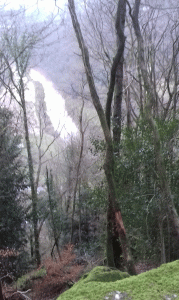Where’s the selfie I hear you ask! But if Wordsworth had this technology to support his memory, would he still have honed that ‘inner eye’ enabling him to retain such vivid images of the Wye Valley? And could he have retrieved them with such effect to sustain and enliven him between his first visit and his return?
Nowadays, I might think of this ability as indicating the development of a rich inner representation; an attachment to place that can be drawn on to provide a sense of continuity and security in the face of separation or dislocation from a place that has meaning. Naturalists have an eye for this; the close attention to the detail of the natural world that is at the heart of recognising shifts and changes in flora, fauna and landscape over time. It suggests an attunement to the environment, a skill of observation and of being in touch with one’s thoughts and feelings that is also at the heart of consulting to organisations from a systems-psychodynamic perspective. See Elemental where I have written about this more fully.
It was 5 long years between Wordsworth’s first visit to the River Wye and the writing of his poem ‘Lines composed a few miles above Tintern Abbey’. The gap for me, of visiting and returning to the Wye Valley, is about 35 years and my memory is both hazy and specific. I remember – as a tiny fragment – driving along that winding road beside Tintern Abbey, pulling over onto the verge with those powerful ruins below, and the black and white cows meandering, rather incongruously, through them.

the sylvan River Wye from Llandogo
Yet, what I do remember, long disconnected from the experience, are lines from Wordsworth’s poem ‘ _And I have felt/ a Presence that disturbs me with the joy/of elevated thought’, words which struck afresh as I re-read them on my return there recently. These lines which have stayed with me these 35 or so years, were not necessarily recalled from the experience I have described. More likely they belong to a time when I was studying Wordsworth, and knew some of his writing in detail. Yet they have sustained, and come to mind at different times, in different places, with all the characteristics of a good inner representation. Revisiting Tintern Abbey, cared for and contextualised for the visitor as it now is, it was easy to see how the place disturbed, how thoughts soared.
My poem ‘slip-stream’ on aspects of place, memory, connection and disconnection is Runner-Up in The Interpreter’s House Open competition 2018 http://www.theinterpretershouse.com/competition and published in #68 of their magazine. Launches will be held at The Fenton, Leeds 14th June from 7.00pm and at Nell of Old Drury, Covent Garden. London on the 5th July, from 6.30pm.
photos: Karen Izod
